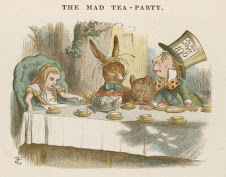The ideological division of the US into red states and blue states is a relatively recent phenomenon. It is only since the 2000 election and the Florida recount debacle that this political color-coding has become more or less fixed. Before then, media outlets tended to alternate the color-coding of the parties every four years. A 2004 report from the Washington Post notes . . .
In 1976, NBC identified states won by Gerald Ford in blue and Jimmy Carter's states in red. On election night in 1980, ABC News showed Ronald Reagan's march to the White House as a series of blue lights on a map, with Carter's states in red. Time magazine assigned red to the Democrats and blue to the Republicans in its election graphics in every election from 1988 to 2000. The Washington Post's election graphics for the 2000 election were Republican-blue, Democrat-red.Given this history, it is remarkable that the red state/blue state divide, as it is commonly understood today, took hold so quickly and has held so fast. Perhaps this can be explained by reference to the media's need for unambiguous monosyllabic short-hand, but this would not be sufficient to account for the change were it not for the fact that the wider public began to self-identify with their preferred duopoly party by color during and after the 2000 election. To paraphrase the bumper sticker slogan, these colors don't run, but, as we have seen, they do indeed fade.


2 comments:
Bear in mind that we only speak of "left" and "right" because of where different parties sat in the legislature during the French Revolution. Given that fact, the rapid adoption of "blue" and (ironic) "red" here is no surprise, nor will its persistence. The larger problem with the alleged logic of "purple" America is the presumption that, between them, "blue" and "red" have all the answers.
Exactly, and beyond that it also presumes that if you do not fully identify with either of the duopoly parties, then you are somehow nothing but a blending of the two, which reinforces the bipartisan charade.
Post a Comment